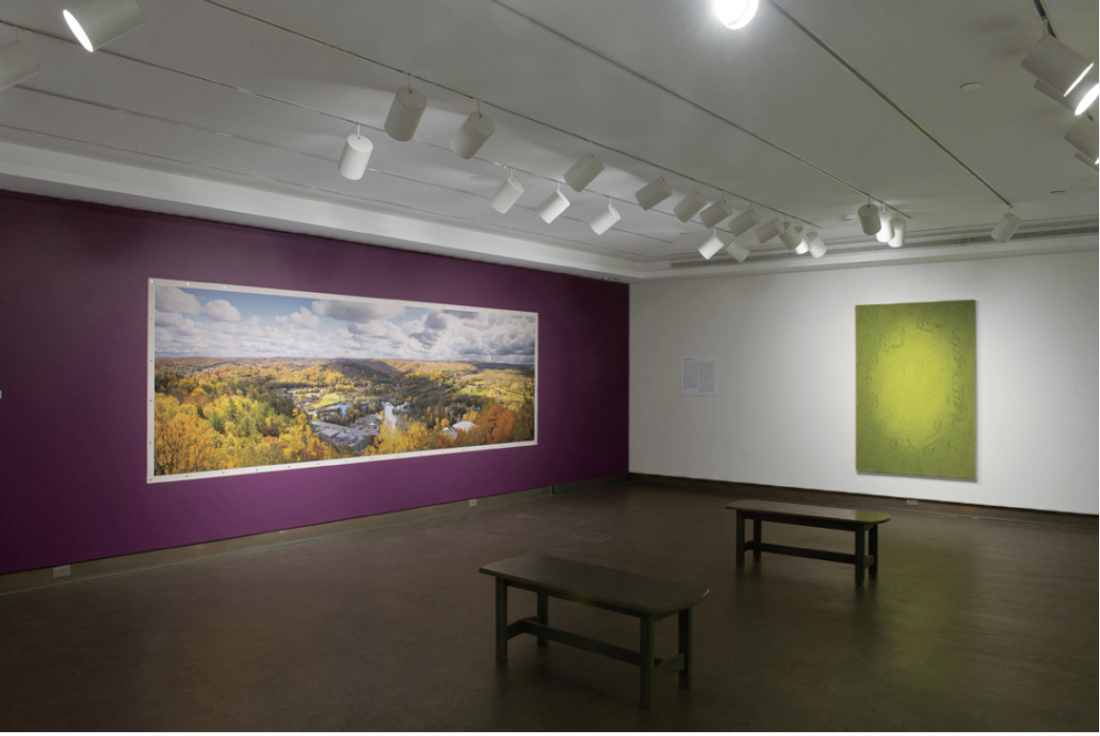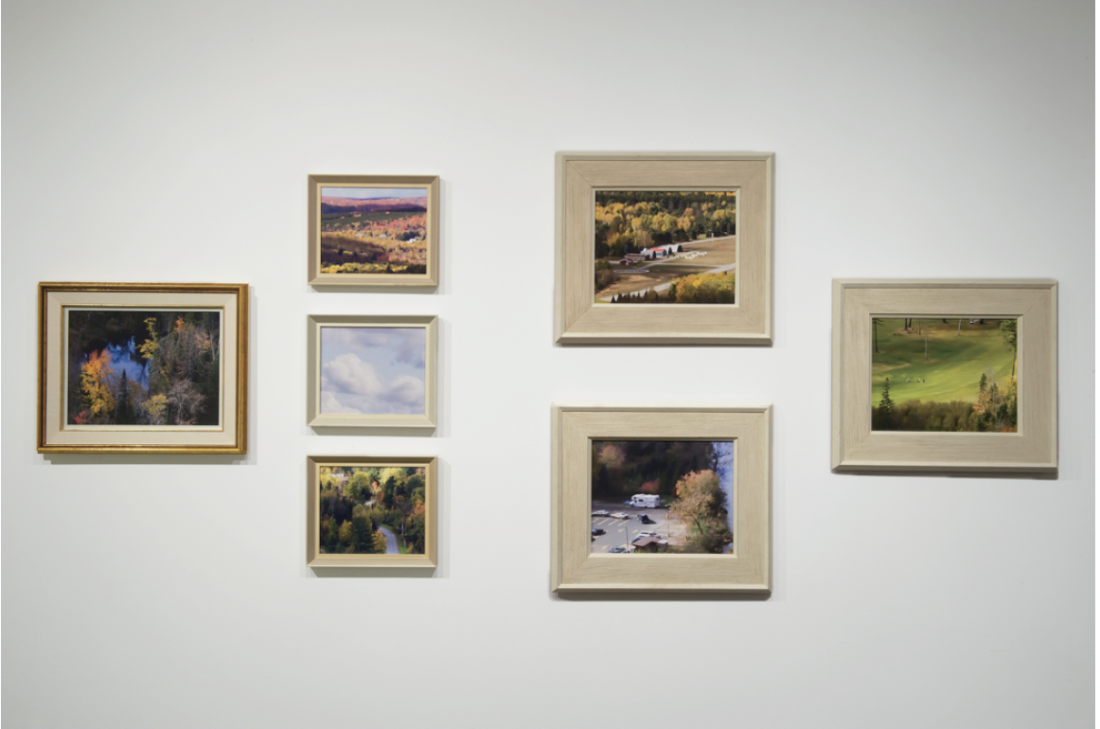“Natural Motif”
Natural Motif: Lorraine Gilbert and Natasha Mazurka at the Ottawa Art Gallery explores the overlapping histories of art and the narratives of landscape and nature that emerged from the Group of Seven’s engagement with Algonquin Park as a regional cultural space.
In the preparation of “Natural Motif,” curator Catherine Sinclair invited Ottawa-based artists Lorraine Gilbert and Natasha Mazurka to respond to the gallery’s Firestone Collection of Canadian Art: a large collection of 20th-century Canadian painting, approximately 600 of which are by the Group of Seven painters. The Firestone Collection offered the two artists a broad spectrum of material ranging from collecting practices, archiving, cultures of display as well as ideas of nature, wilderness and identity. Their response is an array of intertextual references to the histories of art, nature and museological display of the late 19th and early 20th centuries.

“Natural Motif,” installation view, Lorraine Gilbert, Eagle’s Nest, Bancroft, 2012, pigment inks on polypropylene, 152.4 x 305.8 cm and Natasha Mazurka, Cultivation, 2013, oil on canvas, 182.88 x 121.92 cm, Firestone Gallery at the Ottawa Art Gallery, Ottawa. Photograph: David Barbour.
Natasha Mazurka’s finely lit, soft, art nouveau-resonant paintings are deeply nostalgic and seem to engage with a longing for natural histories of the past. Both organic and graphically patterned, they oscillate between painting and the graphic arts, as well as hand and mechanical reproduction. The tensions between materiality and the industrial in Mazurka’s painting Arctic, 2012, also informed A Y Jackson’s painting Arctic in Summer, 1961. Mazurka’s subsequent abstracted sketches of Jackson’s “whiplash” branches are displayed in a cabinet below this work in the permanent exhibition of the Firestone Collection, “In Focus: A Collector’s History,” while the resulting painting emanates luminously on the other side of the partitioned space, revealing the interlacing curatorial theme of the cultural constructs of nature that permeate the connecting exhibitions. Here, nature becomes a motif, whose highly stylized forms and glowing presence assumes something ethereal and otherworldly. Mazurka’s interest in the 19th century’s ordering of the natural world is echoed by Gilbert’s longing to re-engage with and re-evaluate the original landscape of the Group.
Although both artists are concerned with reimagining histories of nature through the Group of Seven, Gilbert’s Eagle’s Nest, Bancroft, 2012, a large photographic panorama of Algonquin Park, is fervent with stylistic, geographic and re-territorializing associations. Here, the “Eagle’s Nest” panorama, as it was known to the “bushwacking” Group of Seven artists and the new wave of 19th century tourist culture alike, is reconsidered through the metaphoric lens of the 21st century. The staggeringly beautiful and picturesque autumnal landscape—ostensibly untouched since the 19th century—reveals, upon closer inspection, the infrastructure of the town of Bancroft’s new consumer culture: Tim Hortons, a car rental and a small shopping complex. Details of the image are placed in original frames used by the Firestone family for works by Group member A J Casson, like small vignettes in an accompanying display.

Lorraine Gilbert, Seven Studies from Eagle’s Nest, Bancroft, 2012, pigment inks on canvas, dimensions variable. Photograph: David Barbour.
At times Eagle’s Nest is as playful as a Cézanne painting, whose perspectival trickery partakes in questions of how the image thinks. Gilbert’s photograph, made from pigmented ink on polypropylene, is comprised of six different digital shots, each of which has been overly focused in places using a luminescent slider. At times atmospheric like a post-impressionist painting, at others—sharp and in focus, Gilbert’s method inverts our expectations of a photograph as a perfunctory medium, and in its place reveals a considered investigation of the culture of consumerism colliding with the edges of this pristine and potentially fragile ecological space. The artist, situated in miniature on the top of a Home Hardware store, is pictured with her camera, completing the conceptual loop at work in this grand panorama.
Both artists also engage with late 19th century colonial culture and conventions of display, Gilbert in her iconic panoramic vision and Mazurka in her schematizing and flattening of the organic. In this, they allude to the fashion for wallpapers during the Victorian era that depicted the exotic, whether it was the Canadian wilderness in a place like Algonquin or distant, colonized lands. This tourist consumption of nature, with its inherent topographies of desire and longing, are in many ways the nexus of the exhibition. ❚
“Natural Motif: Lorraine Gilbert and Natasha Mazurka” was exhibited at the Ottawa Art Gallery, Ottawa, from January 11 to March 17, 2013.
Celina Jeffery is an art historian and curator, and is Associate Professor of Art History and Theory at the University of Ottawa, Canada.

